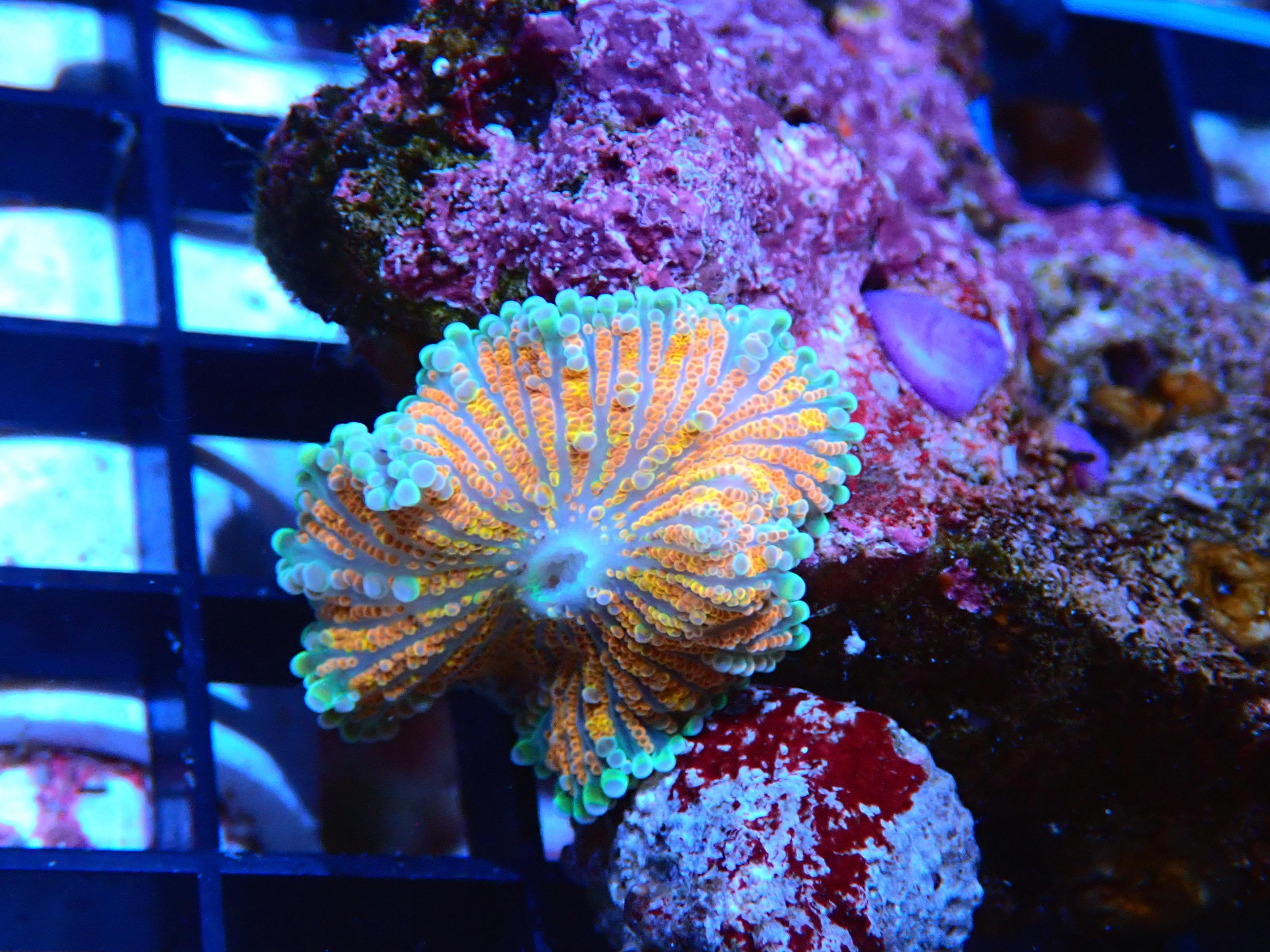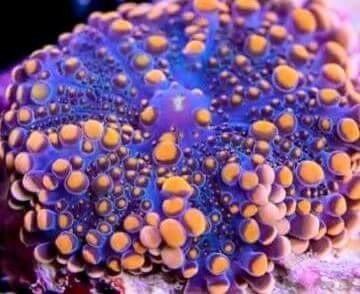


Other Factors That Influence Coral Coloration

To protect themselves corals usually expel the zooxanthellae out of their bodies, therefore the lighter appearance. As a result of more light, the zooxanthellae generates more oxygen (a by-product of photosynthesis) which in higher doses can be lethal for corals. In that scenario, corals have bright colors. The higher light intensity can have the opposite effect. Like we mentioned before, the pigment has a brown color, therefore, in low light conditions corals will have brown colors. As a result of that, the zooxanthellae cells, including the pigment in them, will increase. If the lighting intensity in your reef tank is lower than it should be for those particular corals, the zooxanthellae within them will not be able to provide the necessary nutrients. In general, all corals have the ability to adjust to different levels of light intensity. Lighting intensity is the main factor that influences coral coloration. In which circumstances the zooxanthellae reproduce at faster rates? If some of your corals suddenly show signs of losing their recognizable colors and start turning brown, then that indicates that the population of zooxanthellae cells has been increased. Without zooxanthellae, corals have very bright colors. Well, naturally the zooxanthellae cells have brownish colors. But where the brown colors come from and what’s the correlation between the zooxanthellae and the lighting intensity. These marine algae contain chlorophyll, a pigment responsible for the color of the corals.īy now, you’ve learned that zooxanthellae provide both nutrients and pigment for hard corals. However, the zooxanthellae are the reason why corals turn brown. Without it, they won’t be able to survive too long. In general, corals, particularly hard corals such as LPS and SPS are very dependent on this algae. This relationship is beneficial for both parts.Ĭorals provide protection for the marine algae and in exchange, the zooxanthellae provide nutrients for the corals. Speaking of that, photosynthetic corals are in a symbiotic relationship with marine algae that live within the coral tissue, called zooxanthellae. In home aquariums, the colors of the corals depend on the balance of the lighting intensity and the zooxanthellae within their bodies. Corals that inhabit shallow waters are more colorful in contrast to corals that live deeper in the ocean. They are the main reason corals have such vivid and beautiful colors. Their colors and intriguing nature are one of the main reasons why divers love to explore the ocean, and why hobbyists love so much to keep them in home aquariums.Ĭolors of the corals mainly depend on the lighting, however, other factors can influence coral coloration, as well.Ĭorals develop their main colors as protection of Uv rays. What can you do to prevent that happening?īefore we answer that question, first we need to understand how corals get their colors.Ĭorals are one of the most beautiful and colorful organisms on this planet. And it’s pretty discouraging when you see those beautiful and colorful corals starting to turn brown. People buy SPS corals mainly for their vivid and bright colors.
#RECORDIA MUSHROOM HOW TO#


 0 kommentar(er)
0 kommentar(er)
